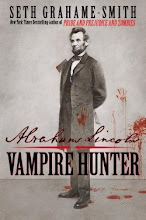substance
noun
1 a particular kind of matter with uniform properties
• an intoxicating, stimulating, or narcotic chemical or drug, esp. an illegal one.
2 the real physical matter of which a person or thing consists and which has a tangible, solid presence
• the quality of having a solid basis in reality or fact
• the quality of being dependable or stable
3 the quality of being important, valid, or significant
• the most important or essential part of something; the real or essential meaning
• the subject matter of a text, speech, or work of art, esp. as contrasted with the form or style in which it is presented.
• wealth and possessions
• Philosophy the essential nature underlying phenomena, which is subject to changes and accidents.
ORIGIN Middle English (denoting the essential nature of something): from Old French, from Latin substantia 'being, essence,' from substant- 'standing firm,' from the verb substare.
material
noun
1 the matter from which a thing is or can be made
• (usu. materials) things needed for an activity
• [with adj. ] a person of a specified quality or suitability
2 facts, information, or ideas for use in creating a book or other work
• items, esp. songs or jokes, comprising a performer's act
3 cloth or fabric
adjective
1 [ attrib. ] denoting or consisting of physical objects rather than the mind or spirit
• concerned with physical needs or desires
• concerned with the matter of reasoning, not its form
2 important; essential; relevant
• chiefly Law (of evidence or a fact) significant, influential, or relevant, esp. to the extent of determining a cause or affecting a judgment : information that could be material to a murder inquiry.
ORIGIN late Middle English (in the sense [relating to matter] ): from late Latin materialis, adjective from Latin materia ‘matter.’
matter
noun
1 physical substance in general, as distinct from mind and spirit; (in physics) that which occupies space and possesses rest mass, esp. as distinct from energy
• a substance or material
• a substance in or discharged from the body
• written or printed material
2 an affair or situation under consideration; a topic
3 the reason for distress or a problem : what's the matter? | pretend that nothing's the matter.
4 the substance or content of a text as distinct from its manner or form.
• Printing the body of a printed work, as distinct from titles, headings, etc.
• Logic the particular content of a proposition, as distinct from its form.
verb [ intrans. ]
1 be of importance; have significance
• be important or influential
2 rare (of a wound) secrete or discharge pus.














































